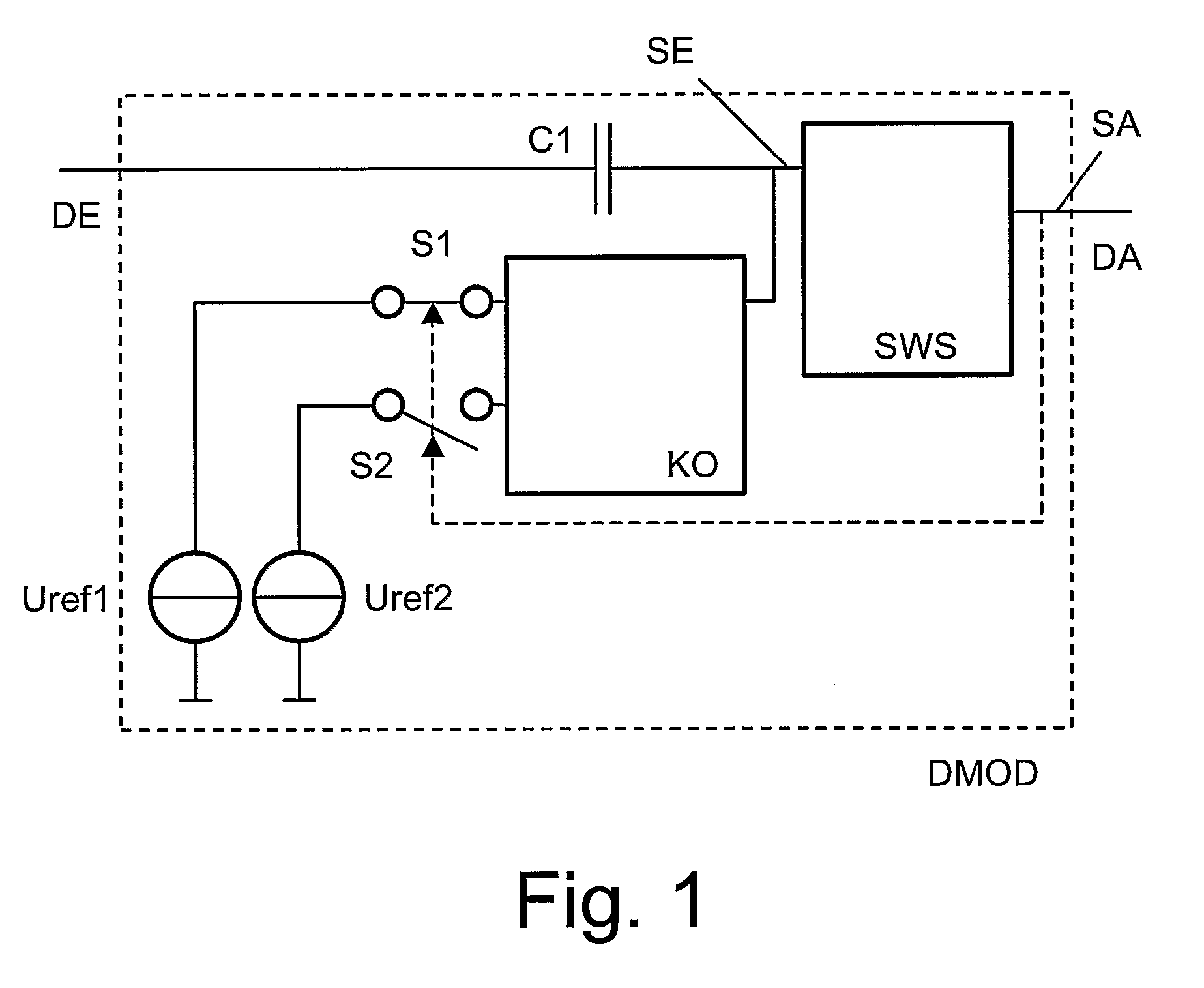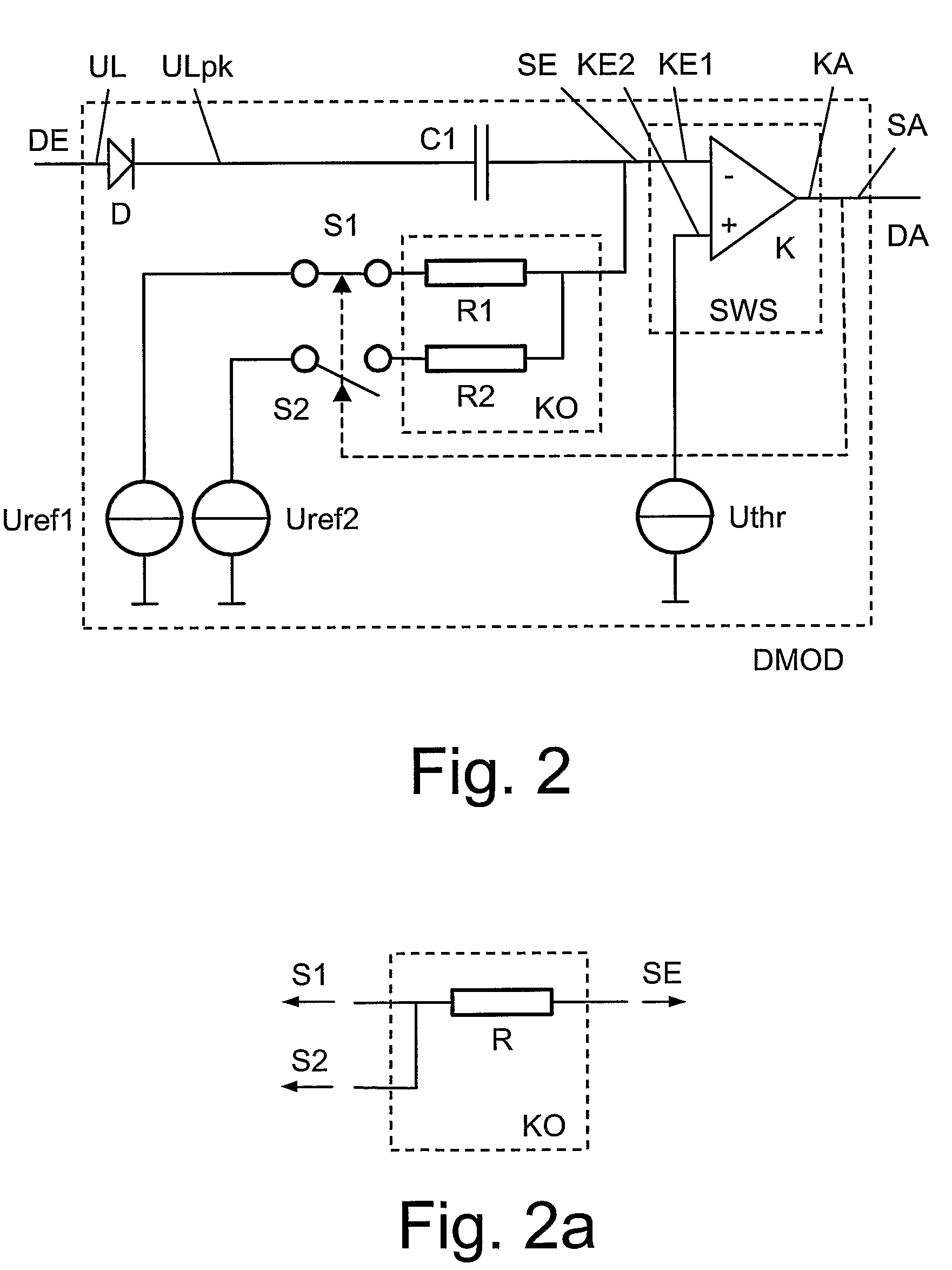Demodulator for amplitude-modulated signals
a demodulator and signal technology, applied in the field of demodulator circuits for amplitude-modulated signals, can solve the problem of insensitivity of the demodulator circuit, and achieve the effect of low voltage and less area
- Summary
- Abstract
- Description
- Claims
- Application Information
AI Technical Summary
Benefits of technology
Problems solved by technology
Method used
Image
Examples
Embodiment Construction
[0032]FIG. 1 shows a demodulator circuit DMOD in accordance with the invention, comprising a threshold switch module SWS, a first capacitor C1, a coupling element KO, a first and a second switch S1, S2, as well as a first and a second reference voltage Uref1, Uref2. A signal output SA of the threshold switch module SWS is connected to the output DA of the demodulator circuit DMOD. Furthermore, a signal input SE of the threshold switch module SWS is connected via the first capacitor C1 to the input DE of the demodulator circuit DMOD. Furthermore, the coupling element KO is connected to the signal input SE. The coupling element KO can furthermore be connected via the first switch S1 to the first reference voltage Uref1, or alternatively via the second switch S2 to the second reference voltage Uref2. Which switch is open and which is closed depends on the state of the signal output SA. Here, the first and second reference voltages Uref1 and Uref2 are to be selected such that one refere...
PUM
 Login to View More
Login to View More Abstract
Description
Claims
Application Information
 Login to View More
Login to View More - R&D
- Intellectual Property
- Life Sciences
- Materials
- Tech Scout
- Unparalleled Data Quality
- Higher Quality Content
- 60% Fewer Hallucinations
Browse by: Latest US Patents, China's latest patents, Technical Efficacy Thesaurus, Application Domain, Technology Topic, Popular Technical Reports.
© 2025 PatSnap. All rights reserved.Legal|Privacy policy|Modern Slavery Act Transparency Statement|Sitemap|About US| Contact US: help@patsnap.com



